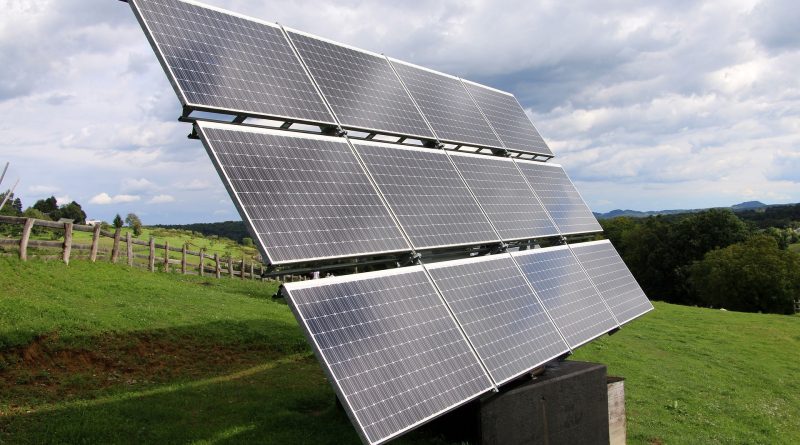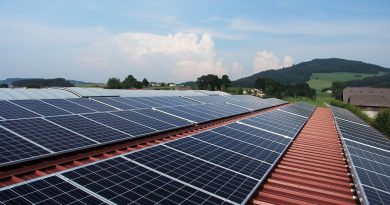Bifacial Solar Panels: Comprehensive Guide for Efficiency
Bifacial Solar Panels: Unlocking the Potential of Solar Energy
With renewable energy sources becoming increasingly important to combat climate change, solar energy has taken center stage as one of the most promising solutions. Traditionally, solar panels have been constructed with photovoltaic cells on just one side, facing the sun. However, technological advancements have led to the development of bifacial solar panels, which have the potential to revolutionize the efficiency and versatility of solar energy.
Understanding Bifacial Solar Panels
Bifacial solar panels are a type of solar panel that can generate electricity from both sides of its photovoltaic cells. Unlike traditional solar panels which only utilize the front side, bifacial panels also make use of the reflected sunlight from the rear side. This means that these panels can generate electricity not only from direct sunlight but also from reflected sunlight, such as from surrounding surfaces like the ground or other nearby structures.
How Bifacial Panels Work
The working principle of bifacial panels is similar to that of traditional solar panels. When exposed to sunlight, the photovoltaic cells within the panels produce an electric current through the photovoltaic effect. In a bifacial panel, the front side captures direct sunlight, while the rear side captures and utilizes the reflected sunlight.
To enhance the efficiency of bifacial panels, a transparent backsheet is often used to allow more sunlight to pass through to the rear side. Additionally, the rear side of the panels is generally covered with a white or highly reflective material to maximize the reflection of sunlight onto the rear surfaces. This design optimization ensures that the bifacial panels can capture and convert the maximum amount of sunlight into electricity.
Advantages of Bifacial Solar Panels
1. Increased Energy Generation: Due to their ability to capture sunlight from multiple angles, bifacial solar panels can generate more electricity than traditional solar panels. Studies have shown that bifacial panels can achieve an energy boost of up to 20% compared to their monofacial counterparts. This increased output translates to higher energy efficiency, reducing the overall cost per kilowatt-hour.
2. Versatility: Bifacial panels offer greater installation flexibility compared to traditional panels. They can be installed vertically or horizontally, on the ground, or even as solar canopies, making them suitable for various applications such as residential rooftops, commercial buildings, and solar farms. This versatility allows for optimal use of available space and opens doors for innovative designs.
3. Environmental Benefits: Utilizing reflected sunlight means that bifacial panels can generate electricity even when the direct sunlight is partially obstructed, such as during cloudy days or in urban areas with tall buildings. This resilience ensures a more reliable energy generation, reducing the reliance on fossil fuels and promoting a sustainable future.
Considerations and Challenges
While bifacial solar panels offer numerous advantages, several considerations need to be taken into account before their widespread adoption.
Firstly, the increased energy output comes with a higher upfront cost compared to traditional panels. However, the cost of bifacial panels has been steadily decreasing, making them more financially viable in the long run. Additionally, the higher energy production offsets the initial investment in a relatively short period.
Secondly, the optimal installation and positioning of bifacial panels require careful planning. Factors such as the height and reflectivity of surrounding surfaces, the orientation of the panels, and the angle of sunlight incidence must be considered to maximize their performance. Thus, expert consultation or simulation modeling tools may be necessary to determine the best design and configuration.
Lastly, proper maintenance is crucial to ensure the longevity of bifacial panels. Regular cleaning and upkeep are necessary to keep the rear side of the panels free from dirt or debris, as any obstructions can reduce their efficiency. However, with regular maintenance and advancements in self-cleaning technologies, the upkeep of bifacial panels is becoming more manageable.
The Future of Solar Energy
Bifacial solar panels have the potential to revolutionize the solar industry and drive the transition towards a sustainable energy future. As technology continues to advance, the efficiency and cost-effectiveness of bifacial panels are expected to improve further, making them an even more attractive option.
With increased energy generation, versatility, and environmental benefits, bifacial solar panels provide a promising solution to maximize the potential of solar energy. As governments, businesses, and individuals seek cleaner and more reliable energy sources, bifacial panels are poised to play a pivotal role in shaping the future of solar energy.
Conclusion
Elevate efficiency with SolarClue®’s comprehensive guide on bifacial solar panels. Distinguished by transparent backs, these panels capture sunlight from both sides, enhancing energy generation. Reflective surfaces and optimal installation maximize rear-side light absorption. SolarClue® guides homeowners in assessing suitability based on location and energy needs. Bifacial panels offer up to 30% more power, ensuring a cost-effective solution for increased energy production. Challenges, including installation angles and shading, are addressed through expert consultations. Contributing to sustainability, bifacial panels require less space for equivalent electricity generation. Explore the cost-effectiveness of bifacial panels with SolarClue®, considering efficiency, space, and long-term value.
Frequently Asked Questions
Bifacial solar panels have transparent backs, allowing them to capture sunlight from both sides. This dual-sided absorption increases energy generation by reflecting light onto the rear side of the panel.
Reflective surfaces, often made of white gravel or concrete, bounce sunlight onto the rear of the panel, boosting efficiency. Glass or other highly reflective materials can also be utilized.
Optimal installation involves placing the panels in locations with high albedo, such as reflective surfaces like snow, sand, or light-colored rooftops, to enhance rear-side light absorption.
Bifacial panels excel in areas with high sunlight exposure and reflective surfaces. They can be beneficial in a variety of climates, but their efficiency may vary based on local conditions.
Absolutely, SolarClue® provides expert consultations to help homeowners assess the suitability of bifacial solar panels based on their location, climate, and energy requirements.
Bifacial panels can yield up to 30% more power than traditional panels, making them a cost-effective solution for maximizing energy production over the lifespan of the solar installation.
Bifacial panels require careful consideration of installation angles, ground cover, and potential shading to ensure optimal efficiency. Proper design and planning are crucial for their effectiveness.
By maximizing energy output, bifacial panels enhance the overall sustainability of solar installations, requiring fewer panels and less space to generate the same amount of electricity.
While bifacial panels perform best in sunnier climates, they can still offer benefits in regions with less sunlight, especially when placed in areas with reflective surfaces.
SolarClue® assists homeowners in conducting a comprehensive cost-benefit analysis, considering factors like increased efficiency, available space, and upfront costs to determine the long-term value of bifacial panels.



